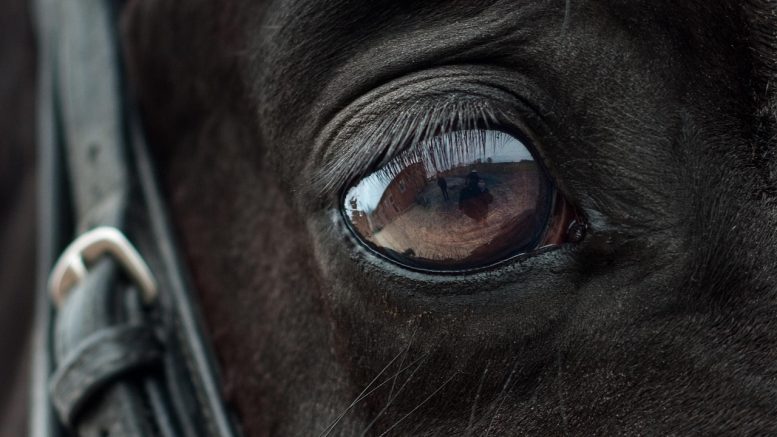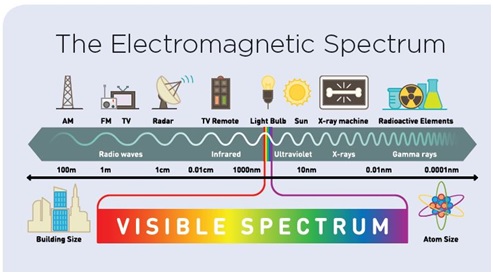Kentucky Derby Equine Deaths: Was EMF the Cause?

This summer, we wrote The Dark Side of the Kentucky Derby about the twelve horses that had mysteriously died at the famous Churchill Downs racetrack. This was an unusually high number of deaths, and we wrote about it from the vaccine perspective and the many vaccines horses receive. We received lots of positive feedback on the article, and some readers let us know about another possible culprit in the horses’ deaths – EMF radiation. As none of us are equine aficionados, we were fascinated to learn this, and promised readers a part 2 to the article. Here it is, and here is what we learned.
What does the research say?
More and more evidence has been published since nearly 200 independent scientists from 39 countries warned the public about human-harmful EMF in 2015. EMF exposure research in humans is still new, and EMF exposure studies on equines are nearly non-existent. According to Equine Wellness Magazine, horses are particularly sensitive to all forms of electricity including EMF, the invisible electric and magnetic field around electronic devices like microwaves, Wifi routers and more.

EMF is thought to affect equine behavior, making the horse nervous or aggressive. EMF can impact digestion, sleep and fertility. EMF can also impact a horse’s vitamin and mineral levels and damage tissues and organs. Horses may experience chronic health issues as a result of EMF exposure, and EMF may lead to repetitive injury or increased healing time after injury. A horse may intake less food and water as a result of EMF exposure.
Horses now commonly experience digestive issues and autoimmune disorders from a variety of stressors including EMF. Race horses experience tremendous stress from training and traveling, but they are also in environments chock full of Wi-Fi radiating from all the nearby cell phones, wireless routers and cell towers.
Unfortunately equine EMF research is non-existent. The predominant research is on pulsing EMF (PEMF) as a treatment for bone and collagen growth post-injury; here is one example. A German study on cows is the closest study, showing that cattle are quite sensitive to EMF, which seems to affect vitamin and mineral (vitamin E, magnesium, copper, iron, selenium and iodine) metabolism. EMF also seems to have a detrimental effect on bovine immune systems, showing increased infection risk, poor udder health, poor reproductive health and reduced milk production in dairy cattle. Does this transfer to horses? More than likely, it does.
How the derby was different this year
This year’s Churchill Downs was different than any other year because this year, horses were fitted with a device never before worn or used in races. It’s called STRIDESafe, a device that monitors the horse’s movements during the race. It records data 2,400 times per second, meaning that it also sends out 2,400 pulses of EMF every second. The device is the size of a cell phone and fits into the cloth under the saddle. According to Arthur Firstenberg’s substack, the horses began wearing the devices during spring workouts and then at the first spring meet on April 29 of this year.
The STRIDESafe device communicates with other devices as well. We’ve all heard of pet microchips, but horses are microchipped too, with the implant designed to last the entire life span of the horse. STRIDESafe communicates with the microchip, which is implanted in the horse’s neck. The STRIDESafe device also communicates with global positioning system (GPS) satellites. Firstenberg also notes that the four aluminum horseshoes effectively become antennas which conduct the frequencies of the STRIDESafe device and the microchip. That means each horse has six antennas, and with 14 horses in a typical race, this translates to 8 antennas in close proximity to every animal.
As we noted in our original article, horses began dying on April 29 at Churchill Downs, and by June, so many horses had died that the spring meet was suspended; the death rate was nearly 10 times higher than in previous years. Racetrack officials inspected the track and grounds, procedures, and really anything that could have caused the issue. No drugs or poisons were found. But EMF is invisible, and it so far seems to have not made the list of possible causes. Be sure to read Firstenberg’s substack for an incredible compilation of each of the 12 horses’ deaths.

STRIDESafe technology is designed to predict racehorse performance. After the 12 deaths, the company released a statement saying that many of the horses who wore the sensors showed abnormal readings the first day. They say that eight of the 12 fatalities were musculoskeletal events, and seven of those eight horses had abnormal STRIDESafe data. The company went on to say that if the animals had been wearing the devices earlier, the data likely would have pointed to early issues weeks or even months earlier. The company naturally is promoting consistent use of the devices to identify issues early on. Notably, the company released these results after a two-day research team meeting. The research team is connected to a grant awarded to the company by the Kentucky Equine Drug Research Council. This team deems the unprecedented fatalities as an anomaly.
EMF and horses is nothing new
Actually, EMF’s effects on horses has been known for over two decades, when New Zealander racehorse trainer Penny Hargreaves spoke out in 1998 about a radio tower that had devastating effects on her 90 horses. She even gave an interview in which she stated that all her horses were affected, some more than others, and two of her horses died. Her horses also wore aluminum shoes, and her horses all seemed to have sore feet. The blacksmith noted that their feet developed huge cracks and some feet even changed shape. The animals were jumpy and nervous, and some became very aggressive. Seasoned horses used to traveling in trailers suddenly lost balance. Many of the horses developed frequent infections.
Early PEMF devices were low emitters, but around 2000, high voltage devices began to be produced. The equine world essentially recreated a human device known as PAP-IMI, which the FDA banned from import into the US due to the high levels of emitted EMF. The PEMF devices were fashioned into blankets, shin boots and hoof pads, with many having lower levels of EMF, but with some as high emitters, including Magna Wave, P3 and Horse Magnetic Pulser, that pulsed EMF into the open air. This means that not only the horse but any person within range of the device has EMF exposure. The devices are incredibly high emitters, many times higher than the EPA-proposed levels of acceptable exposure (1 mG). Comparably, these equine PEMF devices had outputs of 19,200 gauss. For a better context, the device can be compared to an MRI, which uses anywhere from 5,000 to 30,000 gauss when the patient is in the sealed MRI chamber. It’s like exposing the whole barn to an active MRI.
Actually, what happened in New Zealand in the 1990s sounds a whole lot like what happened at Churchill Downs this year. The only thing different at the track was that the horses wore these EMF-emitting devices.
After much flurry and convening of special committees, in September, the Horseracing Integrity and Safety Authority (HISA) (which we mentioned in our original article) released a report nearly 200 pages long. Despite the length of the report, it lacked one thing – a conclusion. The report cited no singular cause for the deaths, which is another way of saying they really don’t know what happened.
Thoroughbred racing is an increasingly competitive sport and there are many articles about the win-at-all-costs mentality. Perhaps STRIDESafe is really helping horses. In New York trials of the device, 17 percent of over 6,000 racetrack starts had “red” ratings, meaning serious issues with the horses’ movements. But at the same time, the trials are heavily subsidized, in a similar fashion to Pfizer sponsoring most of the mainstream media. Therefore, the trials are not without bias. And at a cost of only $35 per horse per use, how can this company make money? Do they really not have a conclusion about the causes of these equine deaths? Since the report is done, we will likely never know.
++++++++++++++++++++++++++++++++
 Like what you’re reading on The Tenpenny Report? Share this article with your friends. Help us grow.
Like what you’re reading on The Tenpenny Report? Share this article with your friends. Help us grow.
Get more of Dr. Tenpenny’s voice of reason at her website.
Join our list here
++++++++++++++++++++++++++++++++
 Fed
Up Texas Chick is a contributing writer for The Tenpenny Report. She’s a
rocket scientist turned writer, having worked in the space program for
many years. She is a seasoned medical writer and researcher who is
fighting for medical freedom for all of us through her work.
Fed
Up Texas Chick is a contributing writer for The Tenpenny Report. She’s a
rocket scientist turned writer, having worked in the space program for
many years. She is a seasoned medical writer and researcher who is
fighting for medical freedom for all of us through her work.
No comments:
Post a Comment